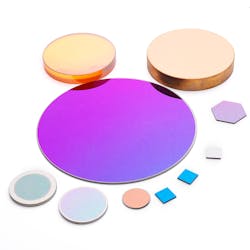The gas sensor market is a complex combination of multiple technologies and applications, but the increasing desire to detect and monitor within different fields demands the development of innovative sensing systems.
Many drivers are causing the overall market to grow, ranging from the consumer demand for the digitization of air quality, data quality, and new manufacturing methods to print sensors, and even vehicle electrification.
Laser spectroscopy-based techniques have led the charge, owing to their high sensitivity, noninvasiveness, and in situ real-time observation. Further improvements in laser sources and detectors have opened a whole new world of opportunities for laser spectroscopy-based sensing and detecting techniques.
Gas is always serious business, and when it comes to methane leak detection, the performance of instruments used for the safety or maintenance checks carried out on natural gas installations needs to be constantly upgraded to meet the latest operational and regulatory requirements.
While there are several kinds of sensors on the market that can do this job, including flame-ionized detectors (FIDs), catalytic sensors, semiconductor sensors, and electrochemical sensors, optical infrared (IR) sensors are the most effective solution.
From wellheads and production sites to offshore platforms and refineries, while it can be a matter of life or death in the extreme, it is also one of daily operational excellence.
IR filters are increasingly deployed using fixed, portable, and personal gas detection solutions to achieve carbon neutrality—helping oil and gas customers monitor and reduce fugitive methane emissions. These methane emissions are 25X more potent than carbon dioxide when it comes to trapping heat, according to the U.S. Environmental Protection Agency.
Early detection is critical in any such scenario and enables users to address leaks and other identified risks, minimize other production losses, and maintain compliance with legislation. Nondispersive IR sensors, which detect often noxious, harmful, and/or corrosive gases in the atmosphere in the parts per billion, remain a vital component when it comes to ensuring the health and wellbeing of the workforce, as well as being integral to a robust preventive maintenance system.
How do IR solutions measure up?
IR emitters within the sensor generate beams of IR light. And, once passed through a sampling chamber, a filter in front of the detector blocks out light that is not at the desired wavelength while the detector measures the intensity or attenuation. This is then used to determine the concentration based on the absorption of IR radiation as it passes through a volume of the gas.
Chief among their benefits are the fast response times and accurate results, while not requiring oxygen or external gases to operate. Ongoing advances in technology have also resulted in detectors that continuously monitor combustible gases and vapors within the lower explosive limit and provide alarm indications. These can be deployed within oxygen-deficient or enriched areas, require little calibration, and are immune to sensor poison, contamination, and corrosion.
Newer gas analyzer instruments use a laser diode mounted on a thermoelectric cooler to tune a laser wavelength to the specific absorption wavelength of a particular molecule. They exploit their high-frequency resolution, which results in enhanced sensitivity—greater levels of interaction between gas molecules and light on the order of parts per billion‚ and selectivity, because they are tuned to a specific compound of gas.
It is this absorption technology that ensures precise gas recognition, eliminating the potential for false alarms, which continues to represent a real issue with other commonly used gas detection technologies.
Dependability is critical
IR sensors enable a fail-safe system for detecting leakages in comparison to other systems that cannot reliably detect small concentrations of the gas. Also, there is no need for interaction with the methane to allow it to detect the gas, which results in a longer lifespan free from damage.
In common with other sensors, IR detectors provide fast response times and accurate results. While catalytic, semiconductor, electrochemical sensors, and FIDs all require the target gas to be present in concentrations below the lower explosion limit, IR sensors can accurately measure gas concentrations of 0–100%. IR sensors also do not require oxygen or external gases to operate.
Laser absorption spectroscopy is a powerful tool for detecting trace gases and is widely used to monitor atmospheric greenhouse gases, pollution, and respiration processes (including human breath analysis).
Umicore IR filters are used globally for a variety of applications to support the reduction of greenhouse gases, such as carbon dioxide, nitrous oxide, and methane.Ongoing efforts to curb industrial methane emissions—anthropogenic methane is the most potent greenhouse gas on earth—continue to gather pace. Its monitoring, detection, and mitigation are considered low-hanging fruit in efforts to alter the course of climate change.
Plant owners must abide by certain regulatory frameworks and invest in measuring equipment to report what and how much is coming out of their stacks.
Interest in air quality has dramatically increased in recent years, so major and growing sensor manufacturers are seeking out high-performance filters at competitive prices. Real-time measurements provided by modern technologies can now be coupled with global positioning systems (GPS) and geographic information systems (GIS), software, and communication solutions can record, transfer, store, and analyze the data supplied by a larger set of interconnected fixed and mobile detectors.
Operators moving in that direction will soon realize that the toolkit at their disposal also calls for a broader framework to extract the most from the technology.
All of this, and more, continues to drive demand for sensor technology that moves seamlessly from production and into a range of ready-now technologies, helping customers meet their health, safety, and sustainability goals.
About the Author
Mark Naples
Mark Naples is the managing director for Umicore Coating Services (Dundee, U.K.).

